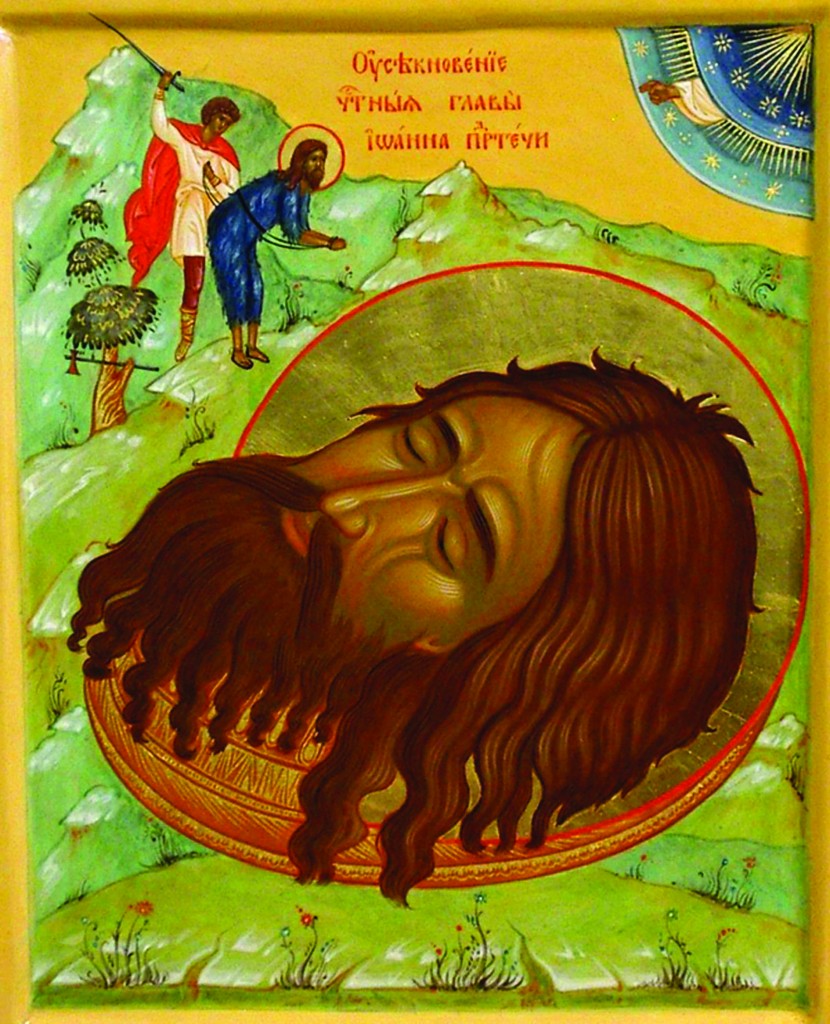
Icon of the head of St. John the Baptist
The Third Finding of the Head of John the Baptist
Along with the lance of Longinus, the head of John the Baptist has a history worthy of an Indiana Jones saga. The Eastern Churches also celebrate the first and second findings in separate feasts. The feasts are celebrated liturgically, of course, but also with the custom of refusing to eat from plates on those days, a remembrance of the platter ordered by Salome to carry the head of the saint. Of course, popular piety points to a much greater lesson in the spiritual life. The significance of John’s martyrdom can scarcely be overemphasized. Jesus Himself bluntly stated that no man greater than John was ever born of woman. So what to make of this rather enigmatic figure?
John’s ministry was central to the career of the Messiah. It was John who provided the occasion for the cleansing by water at Christ’s Baptism; without the humble career of John, the regeneration of the physical world and of souls simply does not occur. John willingly gave up his own disciples to Jesus; the first Apostles were drawn from the ranks of those following John. As Jesus’ ministry increased, so did John’s diminish. In a prefiguring of Calvary, just as Jesus completes His Baptism on the cross, so too does John finalize his baptismal mission in a bath of blood.
Theologians refer to John as the last of the Old Testament prophets, the final installment of the cloud of witnesses mentioned by St. Paul: “Still others had trial of mockings and scourgings, yes, and of chains and imprisonment. They were stoned, they were sawn in two, were tempted, were slain with the sword.” (Hebrews 11:36-37)
John provides a crucial link in the chain of continuity between the Old Covenant and the new dispensation of Jesus Christ. From John through Jesus to the stoning of Stephen, the hatred of the world for God is clearly manifested as an ongoing process. The coming of the Messiah changes nothing in the universal call to martyrdom.
The passage from Hebrews is heard many times throughout the liturgical year as a stark reminder of just what the Christian life entails. Sometimes the civilized behavior of authorities in Western society can lull believers into an unwarranted sense of security: “Surely that cannot happen here!”
The world impolitely disagrees. Christians are slain every day in the Middle East and Africa, Europe is feeling the wrath of the barbarian and even in the “safe” United States, civil authorities place increasingly onerous burdens on the Church and the faithful. Mockings, impoverishment and imprisonment are common enough for Christians in America, and the other trials mentioned are almost certainly not far behind. Our martyrdom may not come at the behest of a licentious bubble-headed teen like Salome (although it just might, at that!) but come it must, else we do not have life in us.
Most will not be called to give up hand (John Damascene) or eyes (Lucy) or head (John), but in every case the Christian must realize that earthly life must be given totally and unreservedly to Christ.
Martyrdom is not simply an uncommon option for the lucky few; it is essential for all who profess the Creed.
Whether that martyrdom is a brutal physical death like John’s or the white martyrdom of the disdain of our neighbor, one way or another our lives are forfeit. Just as the lives of John, Jesus and Stephen were given for the life of the world, we too are called to plant our own little seed and fertilize it with our life’s blood, even if only by the boiling of that blood by the contempt of the ungodly.
—Robert Wiesner

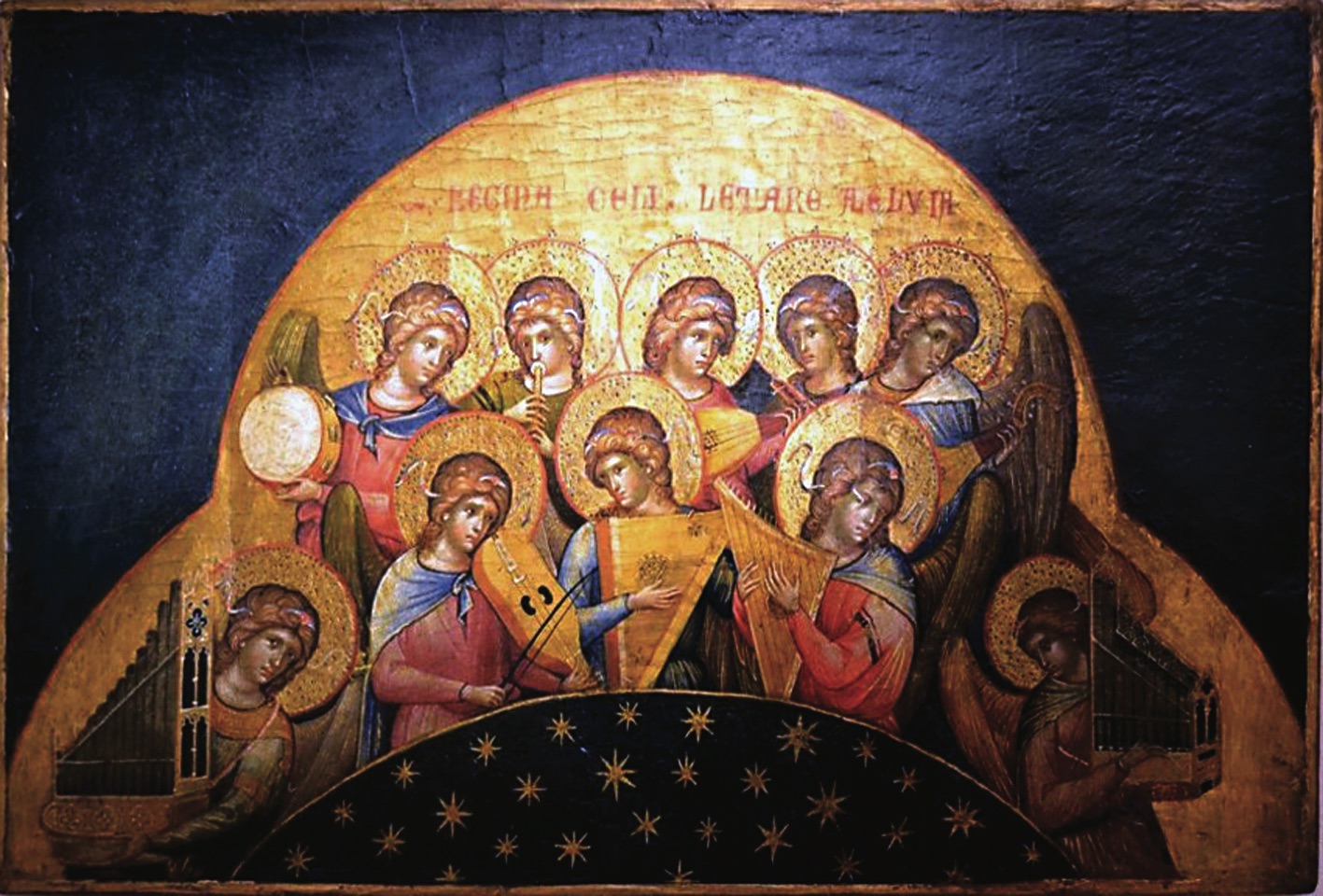
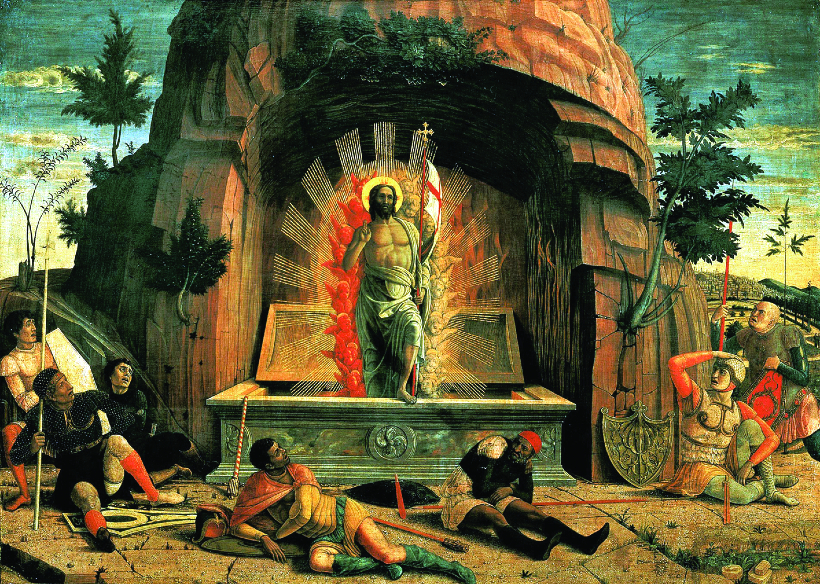

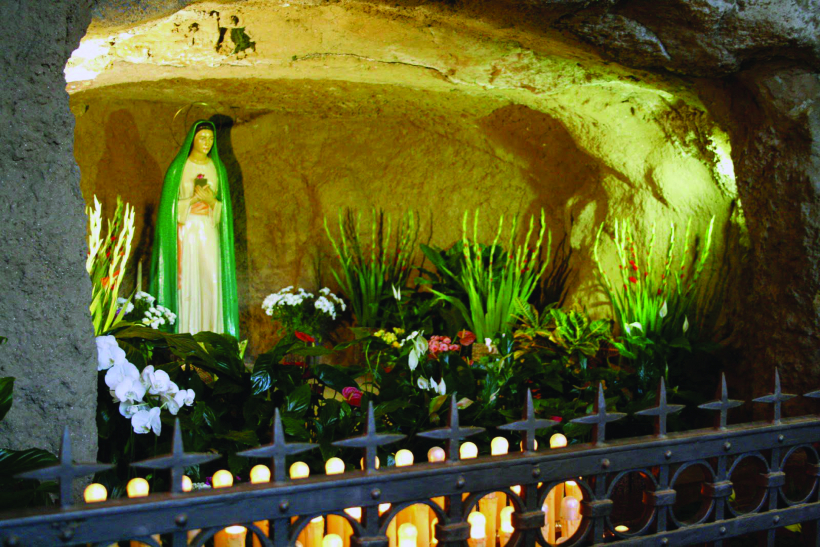
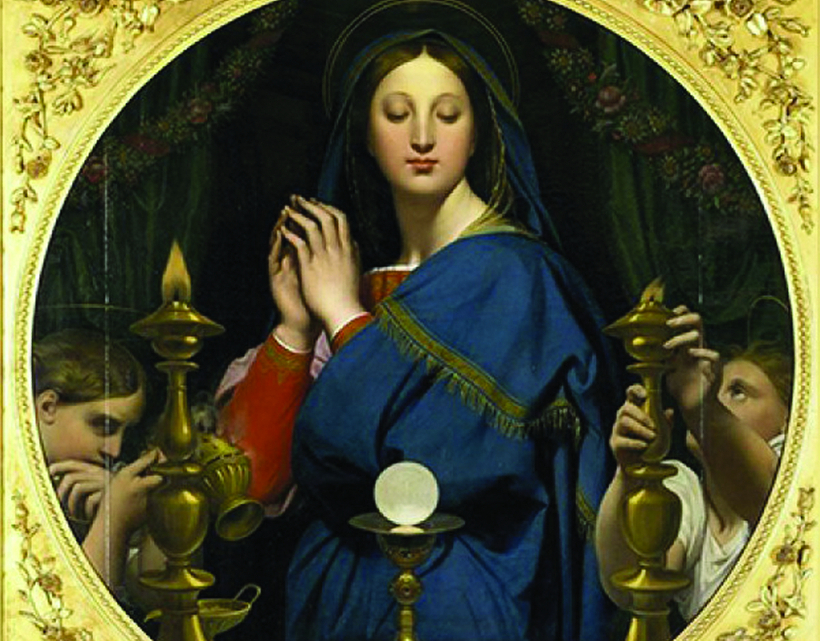
Facebook Comments